From 1930 to 1937 many improvements in style and function served to make cars more comfortable, more attractive, and better performing. Larger engines were developed, allowing many 12- and 16-cylinder cars to be built. In 1933 independent front suspension appeared making larger cars more comfortable and better performing. Also introduced during the 1930s were stronger, more reliable braking systems, and higher-compression engines, which developed more horsepower. Automobiles on both sides of the Atlantic were styled with gracious proportions, long hoods, and pontoon-shaped fenders. Creative artistry merged with industrial design to produce appealing, aerodynamic automobiles.
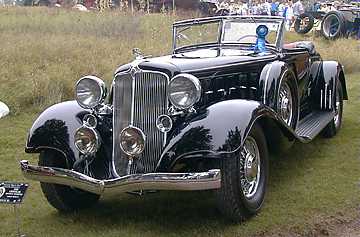
Some of the first vehicles to fully incorporate the fender into the bodywork came along just after World War II, but the majority of designs followed earlier trends having features resembling closely the ones in the picture above. The Ford Motor Company was on of several to be the first to experiment with new design. The 1949 Ford was a landmark in this respect, and its new styling was so well accepted the car continued in production virtually unchanged for three years, selling more than 3 million. During the 1940s, sealed-beam headlights, tubeless tires, and the automatic transmission were introduced.
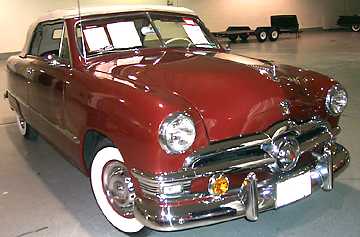
This is a 1950 Ford Convertable.
The 1950's saw American and European manufacturers traveling down two different roads, which didn't begin to merge for nearly a decade. The Europeans continued to produce small, light cars weighing little more than a ton. In America, automobile designers borrowed features for their cars that were normally found on aircraft and ships, including tailfins and portholes. American automobiles grew by leaps and bounds in size, horse power, and ride comfort. The introduction of power steering and power brakes made bigger cars easier to handle, which was good because many American manufacturers built enormous cars, some weighing in at over two and one half tons.
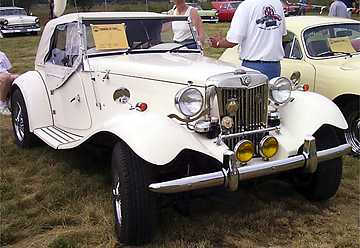
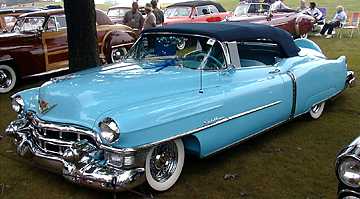
This is a British made 1952 MGT-D, which is tiny
in comparison to this 1954 Cadillac Eldorado Convertible. Look at that
bohemuth.
The first import by German manufacturer Volkswagen AG, the Beetle, arrived in the United States in 1949. Only two were sold that year, but American car buyers were soon attracted by the thousands to the Beetle and other small imports.
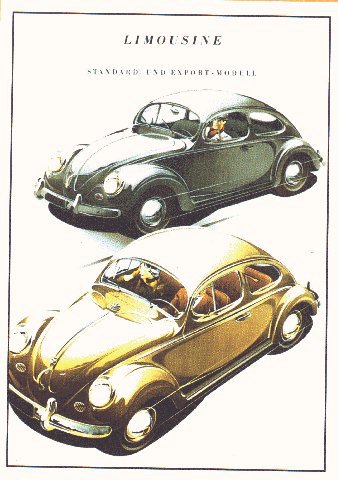
A promotional poster for the 1949 Beetle.
The success of import compacts surely but slowly prompted American manufacturers to down size their products. The first American car called a compact was the Nash Rambler. Introduced in 1950, it did not attract buyers on a large scale until 1958. More compacts, smaller in overall size than a standard car but with virtually the same interior body dimensions, emerged from the factories of many major manufacturers. The first Japanese imports, 16 compact trucks, arrived in the United States in 1956.
In the 1950s new automotive features were introduced, including air conditioning and electrically operated car windows and seat adjusters. Manufacturers changed from the 6-volt to the 12-volt ignition system, which gave better engine performance and more reliable operation of the growing number of electrical accessories.